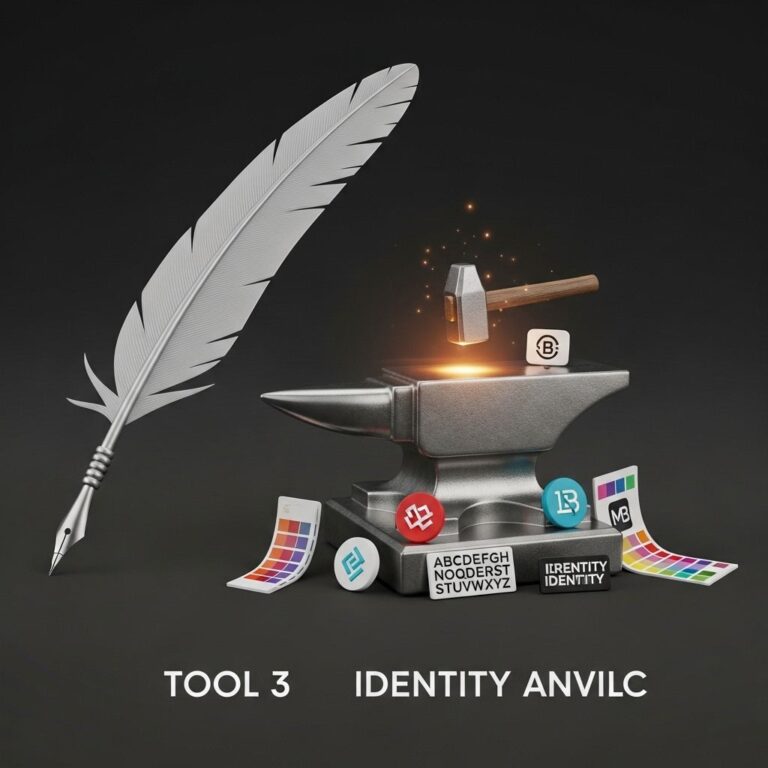In today’s competitive landscape, transforming your story into a brand is not just about creating a logo or a catchy slogan; it’s about crafting a narrative that resonates with your audience and establishes a connection. A well-defined brand story can captivate potential customers, drive loyalty, and differentiate your offerings in a crowded market. This article delves into the essential steps and strategies for converting your personal or business story into a compelling brand that stands out.
Table of Contents
Understanding the Importance of Your Brand Story
Your brand story serves as the foundation for everything you do as a business. It encompasses your values, mission, and the journey that led you to where you are today. A powerful brand story can:
- Enhance customer loyalty
- Differentiate you from competitors
- Drive emotional engagement
- Attract your target audience
By focusing on the emotional aspects of your journey, you can create authentic connections with your audience.
Identifying Core Elements of Your Story
Before you can effectively communicate your brand story, it’s crucial to identify its core components. Here are some elements you should consider:
The Origin
Start by exploring where your journey began. What inspired you to start your business? This can include personal experiences, professional motivations, or challenges you’ve overcome.
The Mission
Clearly define what your brand stands for. What mission drives your business? This statement will guide your branding efforts and help your audience understand your purpose.
The Audience
Understanding who your audience is will shape how you tell your story. Consider their needs, desires, and pain points. Tailor your narrative to speak directly to them.
The Vision
What future do you envision for your brand? Communicating your aspirations can inspire and motivate your audience to join you on your journey.
Crafting Your Brand Narrative
Once you’ve identified the core elements of your story, it’s time to weave them into a cohesive narrative. Here are some strategies to effectively articulate your brand story:
Use a Storytelling Framework
Many successful brands utilize storytelling frameworks to structure their narratives. Consider the following:
- Character: Introduce yourself or your brand as the main character.
- Conflict: Present the challenges or obstacles that led to the brand’s creation.
- Resolution: Share how you overcame these challenges and what solutions your brand offers.
Incorporate Authenticity
Authenticity is key in storytelling. Be honest and transparent about your experiences. This builds trust with your audience and reinforces your brand’s credibility.
Emphasize Emotional Connection
Emotions drive consumer behavior. Use anecdotes, vivid imagery, and relatable scenarios to foster an emotional connection between your audience and your brand.
Choosing the Right Channels for Storytelling
Once your brand narrative is established, you need to choose the right platforms to share your story effectively. Consider the following options:
| Channel | Advantages | Best For |
|---|---|---|
| Social Media | Wide reach, interactive engagement | Real-time updates, audience interaction |
| Blogging | Long-form content, SEO benefits | In-depth storytelling, thought leadership |
| Email Marketing | Direct communication, personalized messages | Building relationships, customer retention |
| Podcasts | Growing medium, engaging audio content | Storytelling on the go, building community |
Creating Visual Identity
A strong visual identity complements your brand narrative. Here are essential elements to consider:
Logo
Your logo should reflect your brand’s personality and values. It’s often the first impression potential customers have of your business.
Color Palette
Choose colors that evoke the emotions you want your audience to feel. Each color conveys different meanings and can influence perception.
Typography
Select fonts that align with your brand voice. Whether modern, traditional, or playful, typography can significantly impact how your message is received.
Engaging with Your Audience
Once your story begins to take shape, engaging with your audience becomes crucial. Here are effective ways to foster engagement:
Encourage User-Generated Content
Invite your audience to share their own stories related to your brand. This can create a sense of community and deepen the emotional connection.
Host Events or Webinars
Interactive events allow you to share your story in a personal format while engaging directly with your audience. Consider hosting Q&A sessions or storytelling webinars.
Utilize Social Proof
Showcase testimonials and case studies from satisfied customers. This not only adds credibility but also demonstrates the impact of your brand in real-life scenarios.
Evaluating Your Brand Story’s Impact
Measuring the effectiveness of your brand story is essential for ongoing improvement. Here are some metrics to consider:
- Brand awareness: Track mentions and visibility across channels.
- Engagement rates: Analyze likes, shares, comments, and interactions.
- Customer loyalty: Monitor repeat purchases and retention rates.
Conclusion
Transforming your story into a brand is a journey that requires thoughtfulness, authenticity, and strategic planning. By following the steps outlined in this article, you can create a compelling narrative that resonates with your audience, fosters loyalty, and ultimately leads to business success. Remember, your story is unique, and when shared authentically, it has the power to create lasting connections.
FAQ
What does it mean to turn your story into a brand?
Turning your story into a brand involves using your personal narrative, values, and experiences to create a unique identity that resonates with your audience.
Why is storytelling important for branding?
Storytelling is crucial for branding because it helps to create an emotional connection with your audience, making your brand more relatable and memorable.
What are the first steps in branding my story?
The first steps include identifying your core values, understanding your target audience, and crafting a compelling narrative that aligns with your brand vision.
How can I effectively communicate my brand story?
You can effectively communicate your brand story through various channels such as social media, blogs, videos, and public speaking, ensuring consistency across all platforms.
What role does visual identity play in branding my story?
Visual identity, including logos, color schemes, and design elements, plays a vital role in branding your story by reinforcing your narrative and making it recognizable.
Can I evolve my brand story over time?
Yes, evolving your brand story is natural as you grow and adapt; just ensure that any changes resonate with your audience and maintain the core message.









